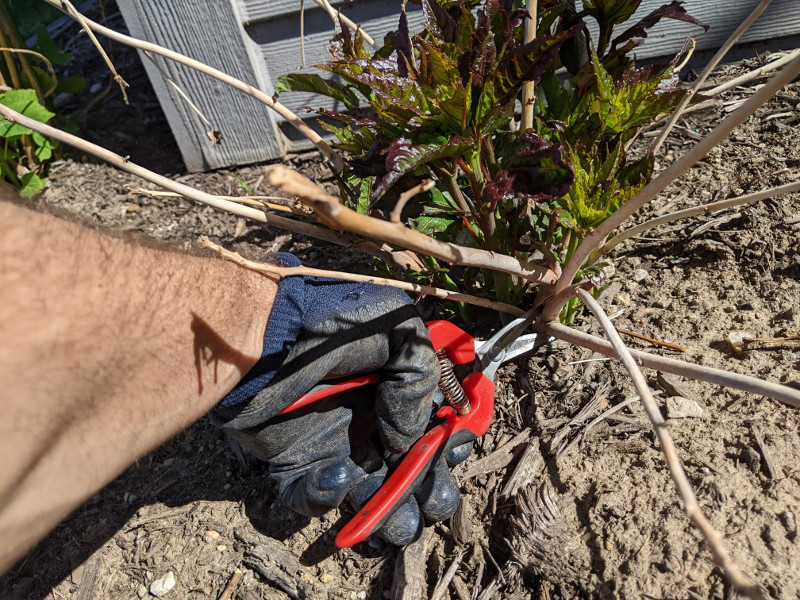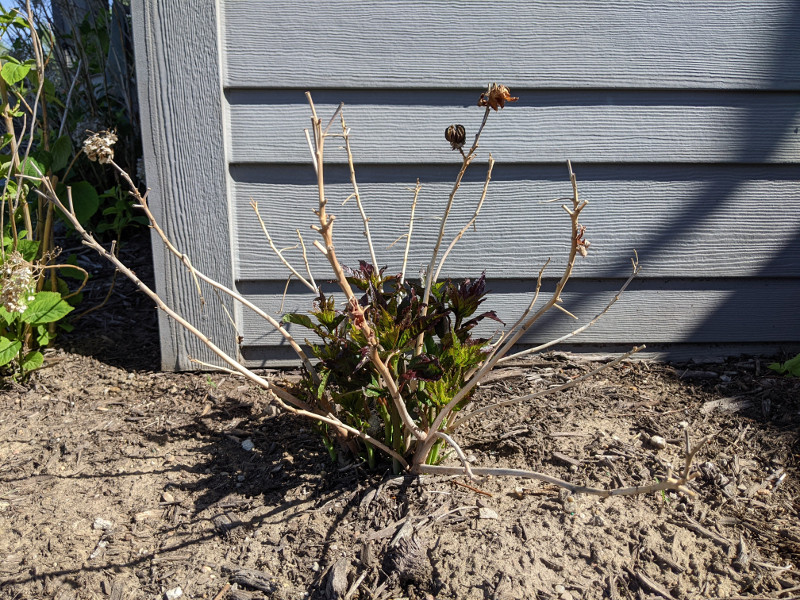Can you cut back Hibiscus? Yes, you can prune Hibiscus plants to remove dead growth and keep the plant healthy. Some gardeners also like to trim Hibiscus to maintain more of a tree-like look. How and when you cut Hibiscus plants matters, and here is what you need to know about pruning Hibiscus.

When to Prune Hibiscus
Spring is generally the best time to prune Hibiscus. In colder growing zones, like 4 through 8, Hibiscus plants must be protected against winter weather. Leaving dead growth on the plants at the end of the growing season can provide some extra protection. In warmer zones, like 9 through 11, Hibiscus plants may go dormant during the winter, and it is best not to trim a plant while it is dormant.
You can touch up a Hibiscus and perform some minor pruning if needed throughout the growing season, but save the bulk of the pruning work for the early spring after the threat of frost has passed.
How to Prune Hibiscus?
Step 1 - Stand back and look at the plant from all sides
Observe if the plant is growing evenly. If you notice more growth on one side, you can pinch new growth on the longest branches. Pinching growth tips will promote more growth in other areas and create a full appearance.
Step 2 - Remove overgrowth or damaged growth
Plants naturally experience dead tips, or inclement weather may cause branches to break. Trim away any damaged branches or branches that are not pushing out foliage and flowers so the plant can redirect its energy into new, productive growth. Trim branches just after nodes, so new growth can emerge at the growth points.
Step 3 - Rejuvenating prune
Older, mature Hibiscus plants with a lot of dead growth or bare spots may need to start over with a hard prune or rejuvenating prune. Cut back all dead and underperforming growth and leave the plant at least 1 foot tall. The plant will need time to recover from a drastic cut, but ultimately it will promote new growth and create a more full and robust shrub.
How to prune for Winter/Spring/Fall/Summer
Pinching back new growth in a dense area of the plant will allow growth to emerge in other areas. When trimming branches, you want to leave nodes, so make your cut just after a node, where new leaves and branches will grow. In most instances, you do not want to remove more than one-third of the plant; however, if you’re trying to rejuvenate an older shrub, then a more severe trim may be necessary.
Some gardeners cut back lower branches during the spring, so their Hibiscus resembles more of a tree than a shrub. Giving the Hibiscus the look of a central trunk instead of maintaining several thinner branches is a matter of preference. If you want to achieve the tree look, identify the main branches you want to keep to support the plant. New branches can be removed as they emerge.
Hibiscus Shrub Dead Branches In The Spring

Hibiscus Shrub After Pruning With New Spring Growth

Why Do You Prune Hibiscus?
The objective when pruning Hibiscus is to create a balanced-looking plant with consistent growth on all sides. If the plant looks uneven or lopsided, removing that growth can even up the look while also forcing the plant to push out new growth in other areas.
Removing dead or damaged growth is beneficial because the plant would otherwise continue supporting these sections. By removing damaged or dead growth, the plant can push out new healthy growth instead of attempting to salvage irreparable growth.
Hibiscus Pruning Tips
- Observe the plant and pinch of new growth.
- Trim branches that create an overgrown or lopsided appearance.
- Trim dead or damaged branches as far down as necessary to remove the damage.
- Remove no more than one-third of the plant to avoid stunting the growth.
 |
Author Alison Cotsonas - Published 12-13-2021 |
